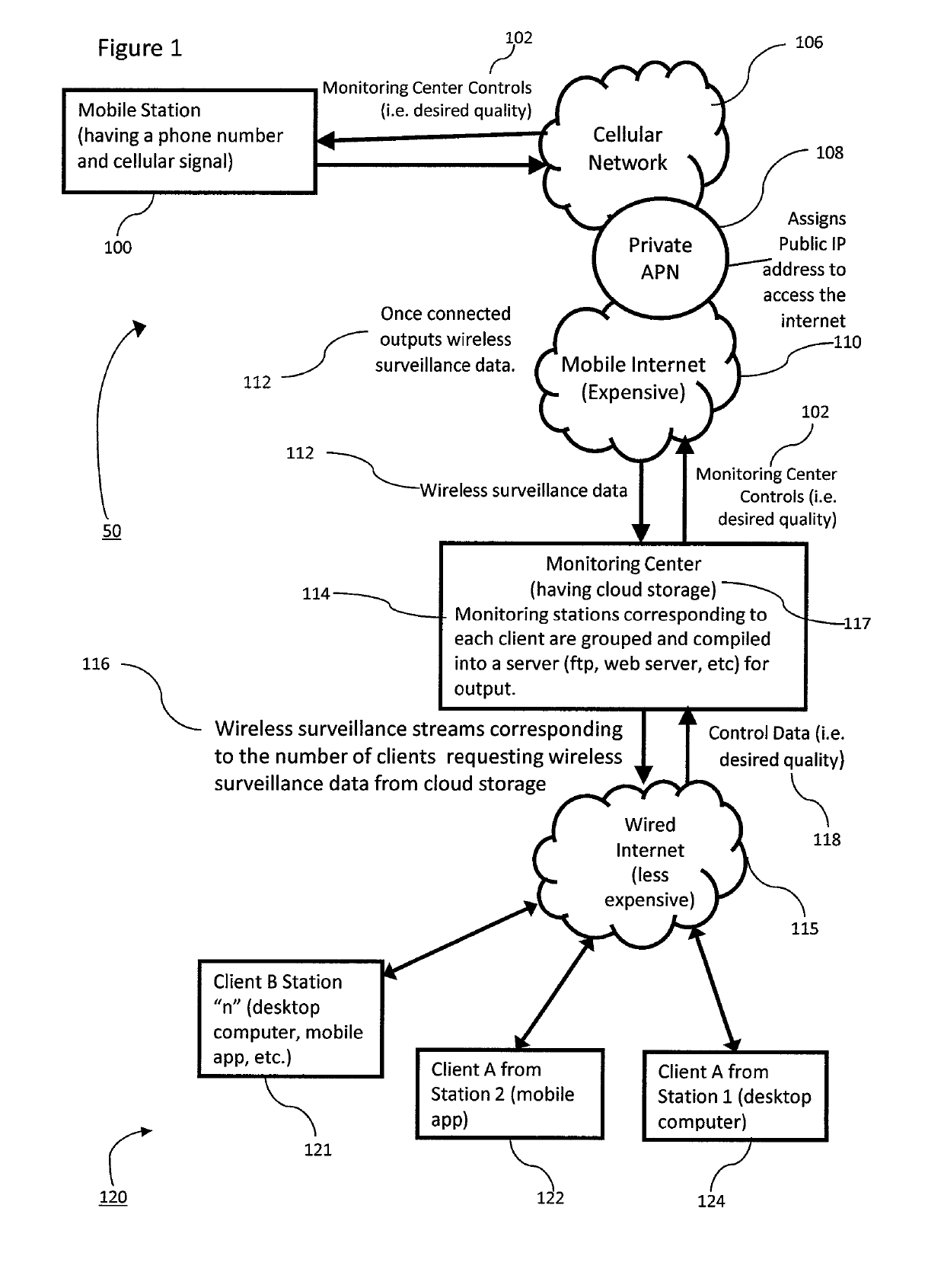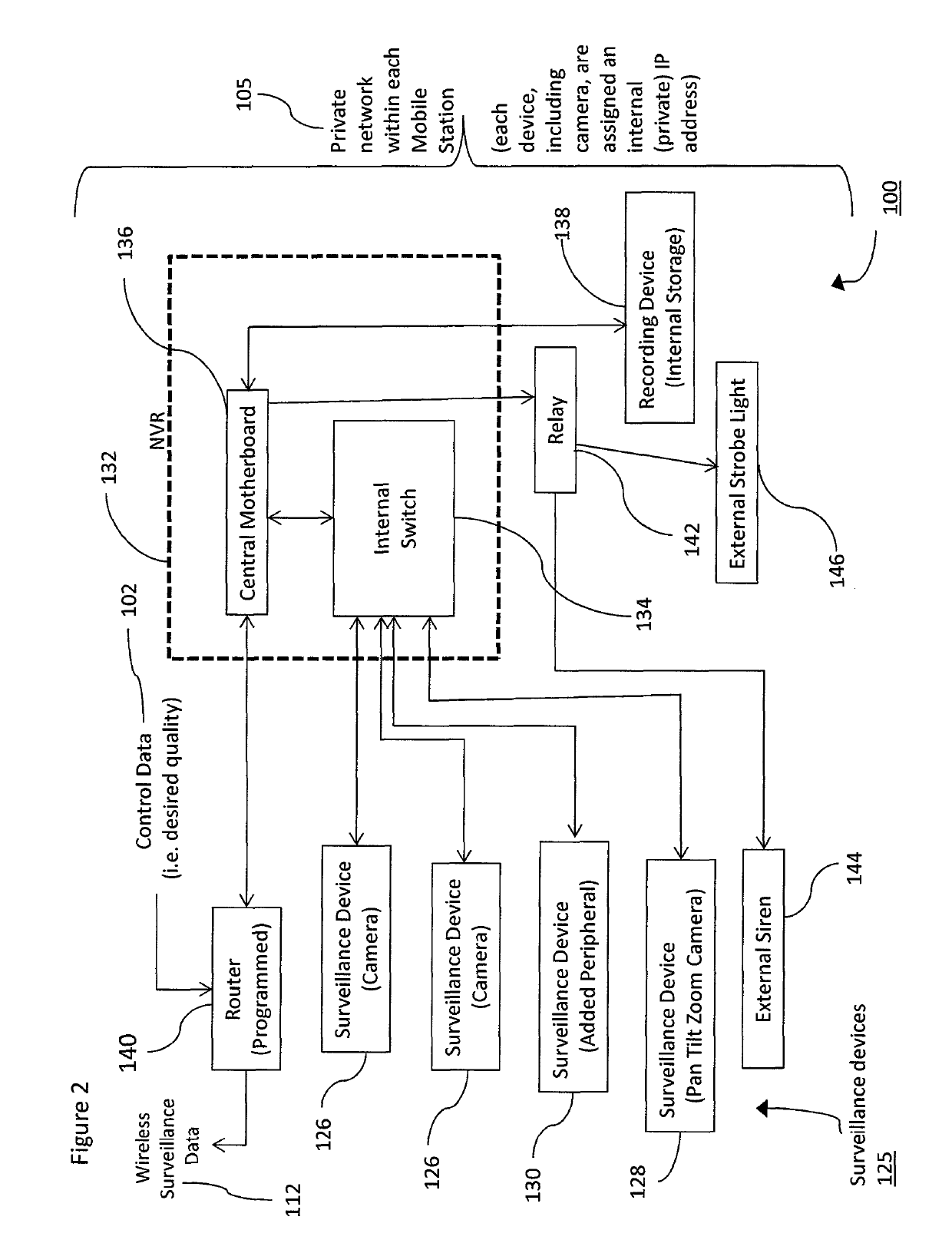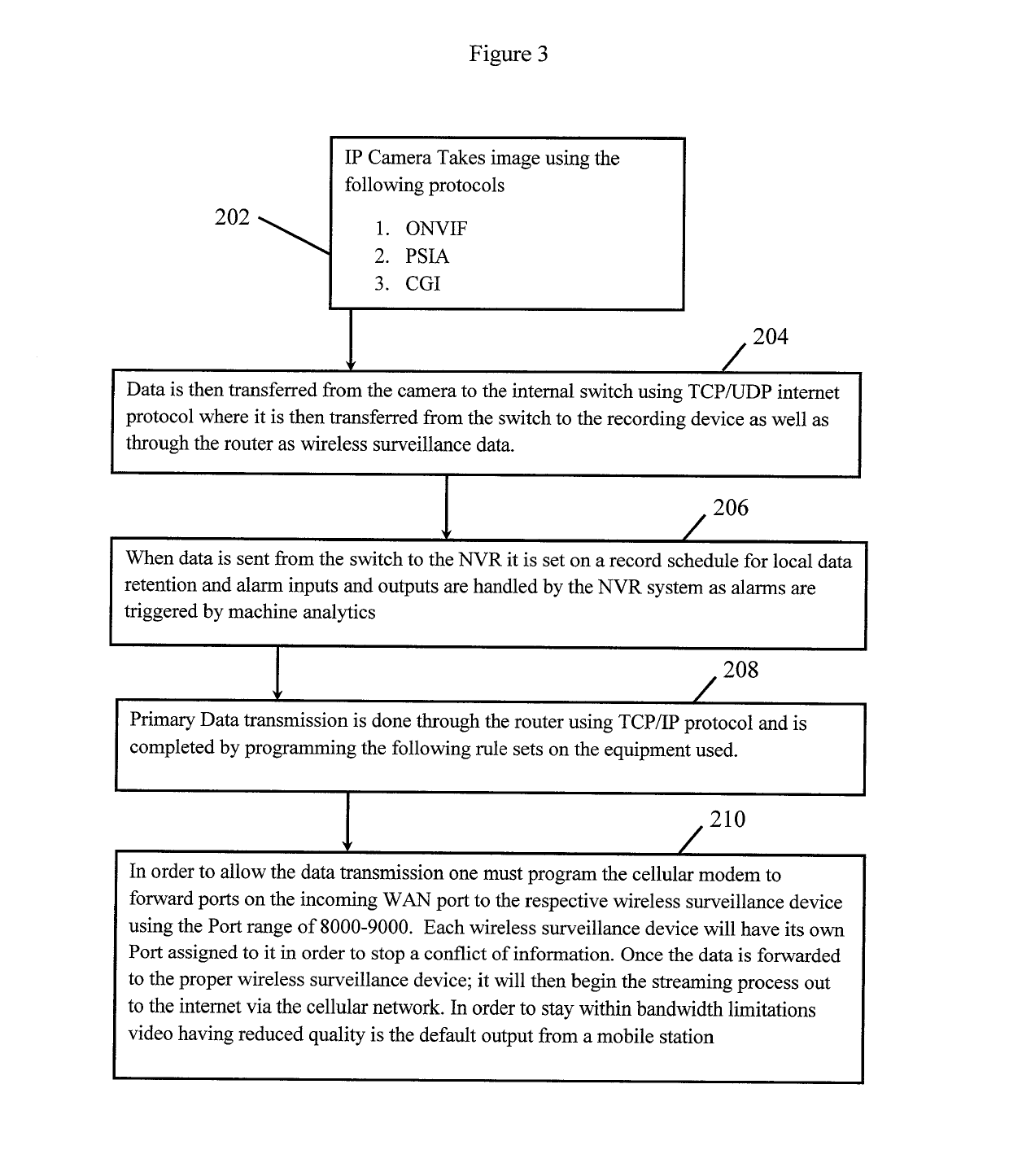Method of video surveillance using cellular communication
a video surveillance and cellular communication technology, applied in the field of video surveillance, can solve the problems of affecting the location of cameras by the limitations of internet accessibility, affecting the ability of ubiquity antennas, and expensive or impossible, and achieve the effect of minimal electrical power
- Summary
- Abstract
- Description
- Claims
- Application Information
AI Technical Summary
Benefits of technology
Problems solved by technology
Method used
Image
Examples
Embodiment Construction
[0059]The present concept is schematically represented in FIGS. 1 to 6.
[0060]Referring to FIG. 1 and FIG. 2 which show a methodology for video surveillance using cellular communications referred to generally as 50.
[0061]FIG. 1 shows the flow of data outside a mobile station 100; whereas, FIG. 2 show shows the flow of data inside a mobile station 100.
[0062]The method of video surveillance with a mobile station using cellular communication 50 includes at least one mobile station 100, a cellular network 106, a private APN 108, a monitoring center 114 having cloud storage 117, and client stations shown generally as 120.
[0063]The mobile station 100 includes a programmed router 140 in communication with a private network 105 further comprising: a NVR 132 having an internal switch 134 and a central motherboard 136, surveillance devices 125, a relay 142, a recording device 138, and on-site alert devices—such as, an external strobe light 146 and / or an external siren 144.
[0064]Surveillance de...
PUM
 Login to View More
Login to View More Abstract
Description
Claims
Application Information
 Login to View More
Login to View More - R&D
- Intellectual Property
- Life Sciences
- Materials
- Tech Scout
- Unparalleled Data Quality
- Higher Quality Content
- 60% Fewer Hallucinations
Browse by: Latest US Patents, China's latest patents, Technical Efficacy Thesaurus, Application Domain, Technology Topic, Popular Technical Reports.
© 2025 PatSnap. All rights reserved.Legal|Privacy policy|Modern Slavery Act Transparency Statement|Sitemap|About US| Contact US: help@patsnap.com



